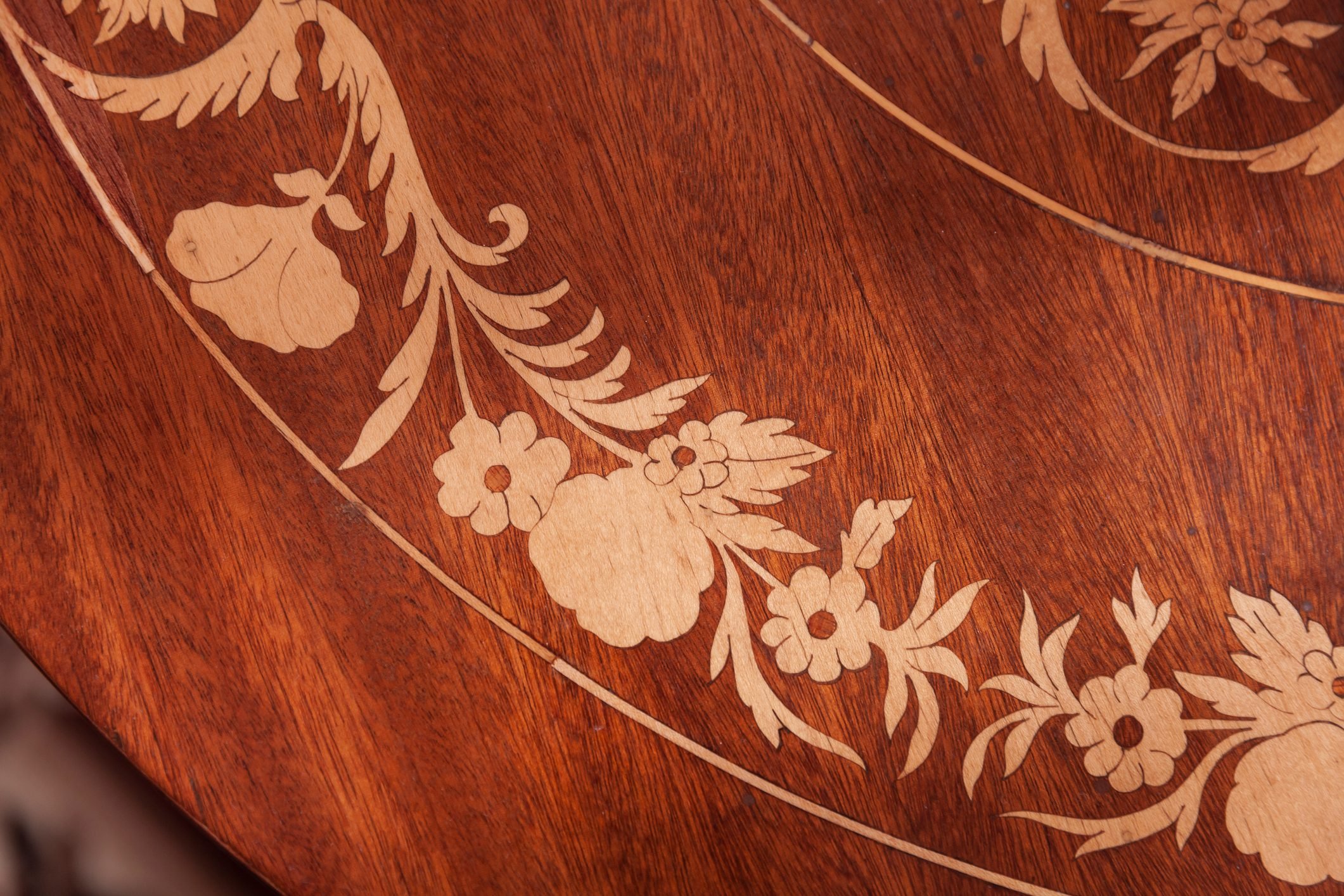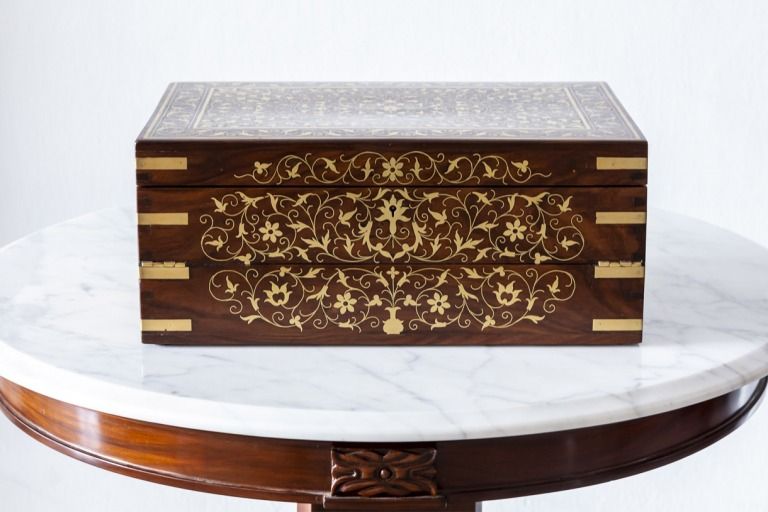Inlaid work has been a hallmark of craftsmanship for centuries, bringing a unique blend of artistry and functionality to furniture decoration. This exquisite technique involves embedding different materials, such as wood, metal, or stone, into a base material to create intricate designs and patterns. In this article, we will explore the rich history, techniques, benefits, and tips for incorporating inlaid work into your furniture. Whether you’re a DIY enthusiast or a seasoned designer, we aim to inform and inspire you to appreciate this beautiful art form.
Understanding Inlaid Work
Inlaid work is the process of embedding contrasting materials into a primary surface. The origins of this decorative technique can be traced back to ancient civilizations, where artisans used it to create stunning pieces for both functional and ceremonial purposes. Inlaying adds depth and texture to furniture, making it an appealing choice for those looking to enhance their home’s aesthetic.
The History of Inlaid Work
The practice of inlaying has roots that can be traced back to various cultures around the world. Here’s a brief overview:

- Ancient Egypt: Decorative inlays were used in tomb furniture, showcasing intricate designs using ivory and semi-precious stones.
- Middle Ages: European craftsmen began using wood inlays as a way to create patterns that reflected their status and craftsmanship.
- Asian Influence: In regions such as India, inlay work has added vibrant colors and intricate details to furniture, often with floral and geometric designs.
Types of Inlaid Work

There are various forms of inlaid work that can be applied to furniture decoration:
- Wood Inlay: Utilizing different types of wood to create contrasting patterns, often seen in marquetry.
- Metal Inlay: Involving the embedding of metals like brass or silver into wood, creating a striking and luxurious look.
- Stone Inlay: Incorporating pieces of stone, such as marble, into furniture, often used in tabletops.
- Shell Inlay: The use of mother-of-pearl and other shells to add iridescence and texture to furniture surfaces.

Why Choose Inlaid Work for Furniture Decoration?
There are numerous reasons to consider inlaid work for your furniture, particularly if you desire a unique touch in your home decor.

1. Aesthetic Appeal
The intricate designs achievable through inlaid work can dramatically enhance the overall look of your furniture. Whether you prefer a modern or vintage style, inlaid patterns can add charm and sophistication.
2. Customizability
Inlaid work allows for great personalization. You can choose materials, colors, and designs that reflect your personal style or complement your home decor.

3. Durability
When performed correctly, inlaid work can significantly increase the durability of furniture. The inlay process can protect surfaces from scratches and blemishes.
Materials Used in Inlaid Work

Choosing the right materials is crucial in achieving the desired aesthetic and durability in your inlaid furniture. Below is a comparison table of common materials used in inlaid work.
| Material | Advantages | Disadvantages |
|---|---|---|
| Wood | Natural beauty, variety of colors, and sustainability. | Can warp over time; requires maintenance. |
| Metal | Durable, adds a luxurious touch, excellent contrast. | Can tarnish or rust if not cared for. |
| Stone | Unique patterns, very durable, water-resistant. | Heavy, can be expensive, and may require sealing. |
| Shell | Beautiful iridescent effects, lightweight, and unique. | Can crack or chip under pressure, less durable than stones. |

Techniques in Inlaid Work
Understanding the techniques involved in inlaid work is essential for both artisans and enthusiasts. Below are the primary methods used in this art form:
1. Marquetry
Marquetry involves cutting different types of wood into various shapes and adhering them to a surface to create a picture or pattern. It requires precision and skill, as each piece must fit together seamlessly.
2. Parquetry
Parquetry is similar to marquetry but focuses on geometric patterns. It’s often used for flooring but can also be applied to furniture surfaces to create visually striking designs.
3. Intarsia
Intarsia is the technique of using different colored woods to create a three-dimensional effect. This method is particularly popular in decorative boxes and tabletops.
DIY Inlaid Furniture: Getting Started
For those looking to try their hand at inlaid work, here’s a simple guide to creating your own inlaid furniture piece.
Materials Needed
- Base material (wood or MDF)
- Inlay material (wood, metal, stone, or shell)
- Router or chisel
- Adhesive (wood glue or epoxy)
- Sandpaper and finishing materials (varnish, stain, etc.)
Step-by-Step Guide
- Design Your Pattern: Begin by sketching your design on paper. Transfer that design onto your base material.
- Cut the Inlay: Use a router or chisel to carve out the areas where the inlays will fit.
- Prepare the Inlay Material: Cut your selected inlay material into the desired shapes, ensuring they fit snugly into the carved areas.
- Adhere the Inlay: Apply adhesive and carefully place the inlay materials into the carved areas. Allow to dry thoroughly.
- Finish the Surface: Sand the entire surface and apply your chosen finish to enhance the beauty of the inlay.
Pros and Cons of Inlaid Work for Furniture
Before diving into inlaid work for your furniture, it’s essential to weigh both the advantages and disadvantages.
Pros
- Unique and artistic appearance
- Customizable designs that reflect personal style
- Increased durability and resistance to wear
- Increased value of furniture pieces
Cons
- Can be expensive, particularly high-quality materials
- Requires skilled craftsmanship for best results
- Maintenance may be necessary to preserve appearance and durability
Maintaining Inlaid Furniture
Proper maintenance is essential to ensure the longevity and beauty of inlaid furniture. Here are some tips:
1. Regular Cleaning
Dust your inlaid furniture regularly with a soft, dry cloth. Avoid using harsh chemicals that can damage the finish.
2. Temperature and Humidity Control
Keep the furniture in a climate-controlled environment to avoid warping or cracking. Extreme temperature changes can harm the inlay work over time.
3. Use of Coasters and Protectors
Always use coasters under drinks and place protective mats under hot dishes to prevent damage to the surfaces.
FAQs about Inlaid Work in Furniture Decoration
What is the difference between marquetry and intarsia?
Marquetry involves creating a flat design using different materials, while intarsia uses various woods to create a three-dimensional effect.
Can I do inlay work on already finished furniture?
Yes, but it may require stripping the finish off the surface or carefully working around it to avoid damaging the underlying layers.
Is inlaid furniture more expensive than regular furniture?
Yes, inlaid furniture typically costs more due to the intricate craftsmanship and quality materials involved in the process.
What types of wood are best for inlay work?
Hardwoods like mahogany, walnut, and cherry are popular choices for inlaid work due to their durability and rich colors.
Conclusion
Inlaid work represents a timeless art form that adds depth, beauty, and uniqueness to any piece of furniture. Whether you appreciate the craftsmanship behind it or want to incorporate it into your home decor, understanding inlaid work can help you make informed decisions about your furniture choices. From DIY projects to purchasing stunning pieces, the world of inlaid work is ripe for exploration. We hope this article has inspired you to embrace the elegance of inlaid work in your own home.